KY8D (original) (raw)
KY8D Ham Radio Operator KY8D perl, cw, morse code, amateur radio, esperanto Gan Uesli Starling 2015-2023, Gan Uesli Starling Ham Radio Station KY8D
Base Location
- Op: Ĝan Ŭesli Starling
- QTH: Port Sheldon, Michigan, USA
42° 52' 20.8" N 86° 10' 47.1" W
Grid Square EN62vu - Email:

- Social: Mastodon
- Postal Address: 5721 160th Ave, West Olive MI 49460-9151, USA
Call Signs
I held one prior (Novice) callsign, and five concurrent amateur callsigns (USA, Northern Ireland, Canada, St. Helena & South Africa).
Logbook Milestones: First contacts following grant of license and/or upgrade.
- 1981-05-23, 21.125 MHz, 18:40-19:00, KA8LHK, CW, 1st as Novice KA8MWF
- 1981-08-26, 21.409 MHz, 21:08-21:16, K8OQB, CW, 1st as General
- 1982-09-24, 14.009 MHz, 01:05-01:22, G4LZD, CW, 1st as Extra
- 1982-10-17, 3.517 MHz, 03:45-04:08, NS4X, CW, 1st as KY8D
- 2023-07-01, 14.028 MHz, 17:03-17:07, N0TA, CW, 1st as VA7KYD
Equipment
- Rigs:
- Mission RGO One, 10-160m, 5-55W (Reviews: eHam )
- QRP Labs QCX+, 30m, 5W (built from kit)
- Small Wonder Labs SWL-30+, 30m, 1W
- Ten-Tec 1208 Xvtr, 6m, 8W
- IC-745, 10-160m, 10-100W (Retired, kept as backup)
- Amps:
- Tuners:
- MFJ-984 Versatuner IV, 3kW
- MFJ-989C Versatuner V, 3kW
- MFJ-16010, 100W, for portable use
- Link-Coupled FRI-Match, 200W homebrew
- Antennas:
- Giant Coat Hanger: an irregular closed loop, delta-shaped, 12m up, 44m per side.
- 39-foot tall, 5-wire folded monopole, draped from guyed mast. Eight radials. Soil enriched to 24-foot radius with 100-lbs of graphite sand.
- Portable
* Pre-cut wires, 20AWG 600V PTFE, silver plated
* Non-resonant lengths: 11.4m & 9.28m, a pair of each
* Mix and match with homebrew 9:1 balun or unun - Kites:
* PowerSled 14, 160 x 102 cm, 90 lbs line
* PowerSled 24, 242 x 113 cm, 250 lbs line
* PowerSled 36, 323 x 150 cm, 500 lbs line
- Portable Power:
- Flight-worthy homebrew battery pack
* Four LiFePO4, 12V, 8A/hr batteries (each < 100W/hr per TSA & EU)
* Individually switched for use and/or charge
* MMPT carge controller: Genasun GV-10-Li-14.2V, 10.5A (RF quiet)
* Anderson PowerPole jacks for in/out. - Solar Panels
* BALDR 120W, 18V, 4-panel fold-up.
* Rockpals RP100, 100W, 18V, 4-panel fold-up. - Power Monitor: AnkgPower, QTY 2 (charge & load)
- Flight-worthy homebrew battery pack
Club Memberships
- Current ID List:
- ILERA 348
- FISTS 12135
- SKCC 14636
- ARRL 7011077
Club Contact Synopses:
SKCC FISTS ILERA ☜ Individual tables, each on own page.
Commercial T License!
FCC Database ☜ Shades of Steve Martin: "The new listing is posted! I'm somebody now!"
Fulfillment of a 40-year ambition! Signed into log as radio officer on a ship: station KKUI aboard the S.S. American Victory, Port of Tampa.
- 2019-09-28, 500 kHz; 17:55-17:56, CQ, CW, 1st ever commercial transmission.
- 2019-09-28, 12.552 MHz; 19:10-19:12, KFS, CW, 1st commercial message.
 Holding my Proof-of-Passing Cert
Holding my Proof-of-Passing Cert
amid the COLEM VEC team.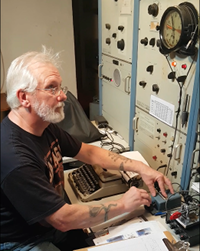 Video: Transmitting on 500 kHz
Video: Transmitting on 500 kHz Message to Self
Message to Self Commercial FCC License
Commercial FCC License
Above are thumbnails: click to see better.
Luster Regained
2000-04-15 was the sunset date for the 20wpm Morse code requirment to earn an Extra Class license. On that day, the once shiny luster of Extra Class corroded compltely away.
Which then left only the FCC commerical telegraph license. Which very thing had been my ambition when entering college back in 1981. But come first semester, the college itself retargeted its degree program away from communications and over to industrial electronics, wrenching my career path into a right-angle turn.
40 years later, I achieved that goal: FCC Commercial T License.
Marathon QSO Award
Never before had I been one to pursue any kind of award. Mainly the reason is for how most are earned: hit-and-run QSOs got during contests. And I really, really, really dislike working contests. I only like ragchews. According to my log, I qualify for plural FISTS ragchew awards on several bands, but have not yet bothered to apply.
Now and then it would sometimes happen that another op would request that I send an email to the SKCC confirming our QSO of hour-plus length while on straight key. Once that tally climbed up to five, Cecil, the award manager, invited me to place my name into the official listing of award participants. After some thought, I gladly accepted.
Then seeing my tally at just only five, felt it could be improved upon. Before very long I too was striving in earnest. A great deal of fun, insofar as each QSO must run to an hour or longer, wherein you get to enjoy real conversations.
More than once, I did marathons back-to-back. One of my QSOs ran for 3:09 hours, beating the previous record in that listing by a good measure. Will be interesting to discover how long it shall stand. Anyhow, here is a link to my separate page about that: Marathon
 Award Plaque
Award Plaque
CQ RC
Never do I contest or join a pile-up, no matter how rare might be the DX. Contest-like QSOs I hate with a passion for being too short. For a long time I've wished for a prosign to use in the same way as CQ DX or CQ MM the better to indicate that only chatty ops should reply.
Therefor do I now sometimes call CQ RC in hopes of avoiding the annoyance of getting only TU 73 SK dit-dit on the second exchange. Here is a link all about doing that: CQ RC
QRZ Pages
KY8D Home page: USA
ZS1/KY8D DX page: South Africa
VA7KYD DX page: Canada
QSL Retro
Other than Field Day, I have zero interest in contests. Mostly I'm wanting your real and actual QSL card to hold and admire, the better if its design stands alone from all others.
I keep pencil-on-paper logs in official ARRL, spiral-bound logbooks, which I later cross-index into a private database hand-coded in SQLite accessed via a Perl/Tk GUI. The software nags me to QSL every first contact lasting 15 minutes or longer. Mostly I send by direct mail.
Received QSLs showing artistic flourish win pride of place upon my wall no matter from where. Below, are thumbnails of my top favorites. Click on N1EA and read the fine print!
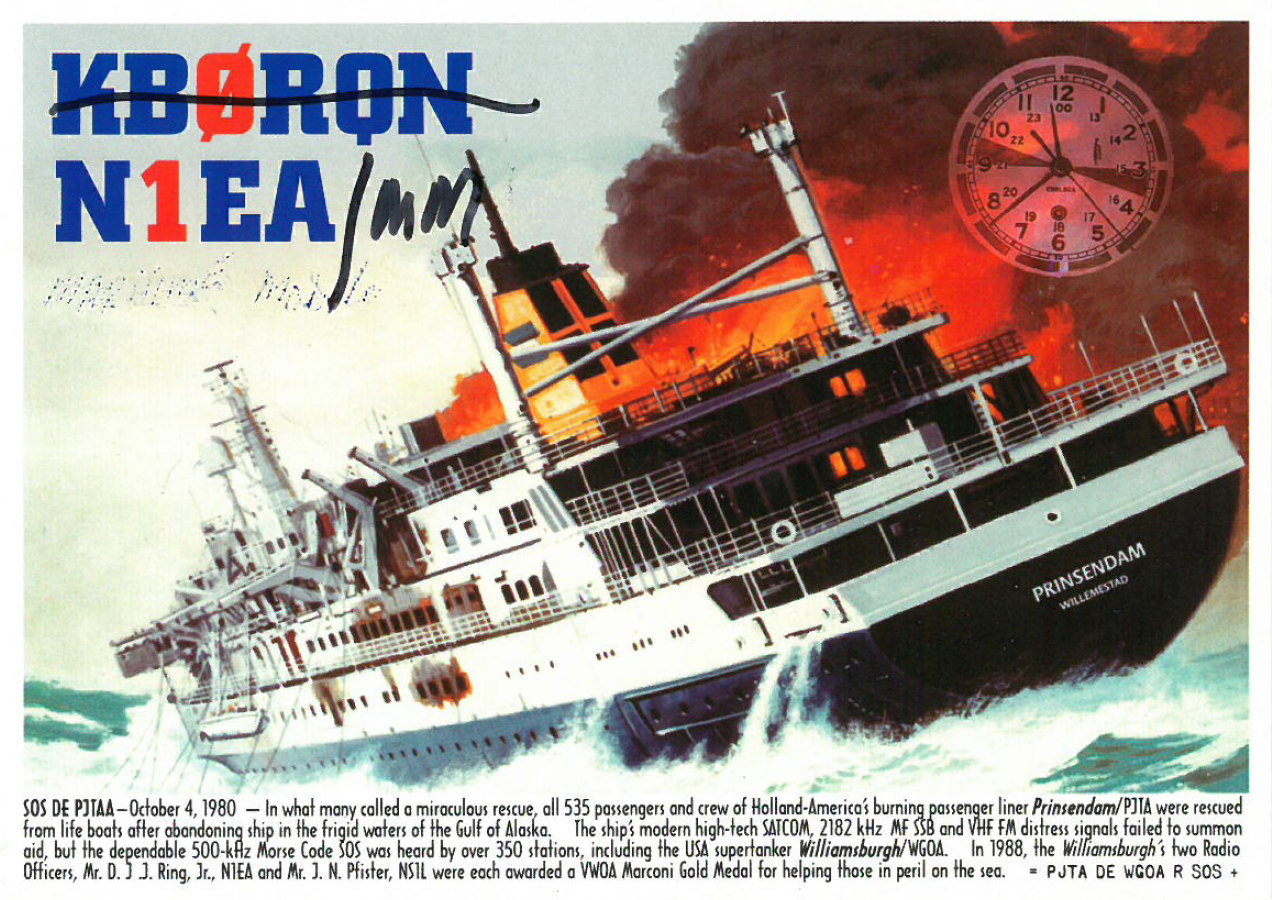 N1EA/MM
N1EA/MM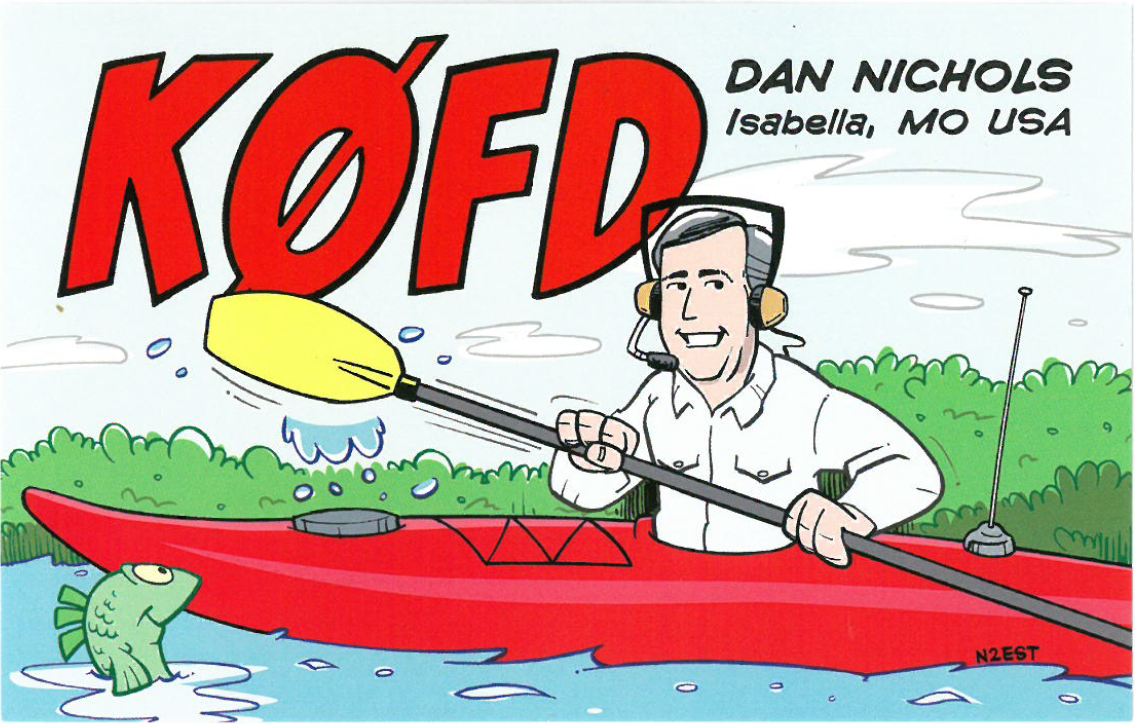 K0FD
K0FD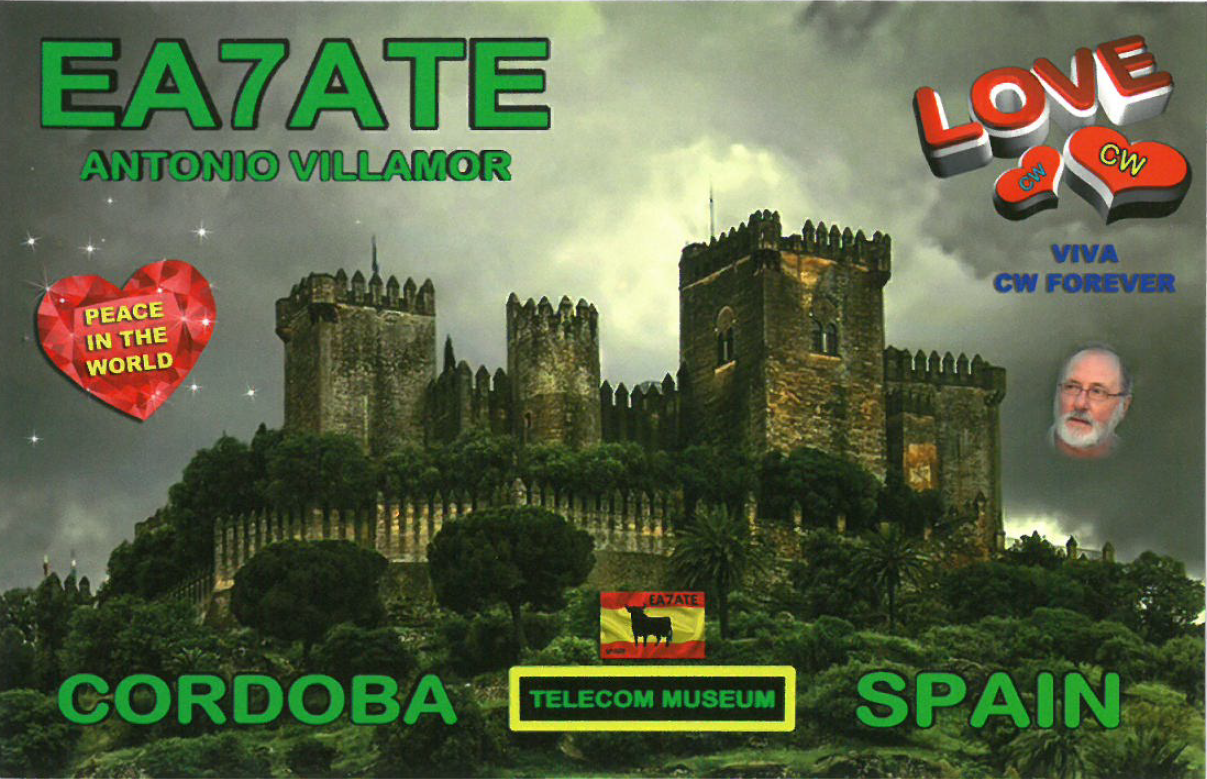 EA7ATE
EA7ATE W6RO
W6RO 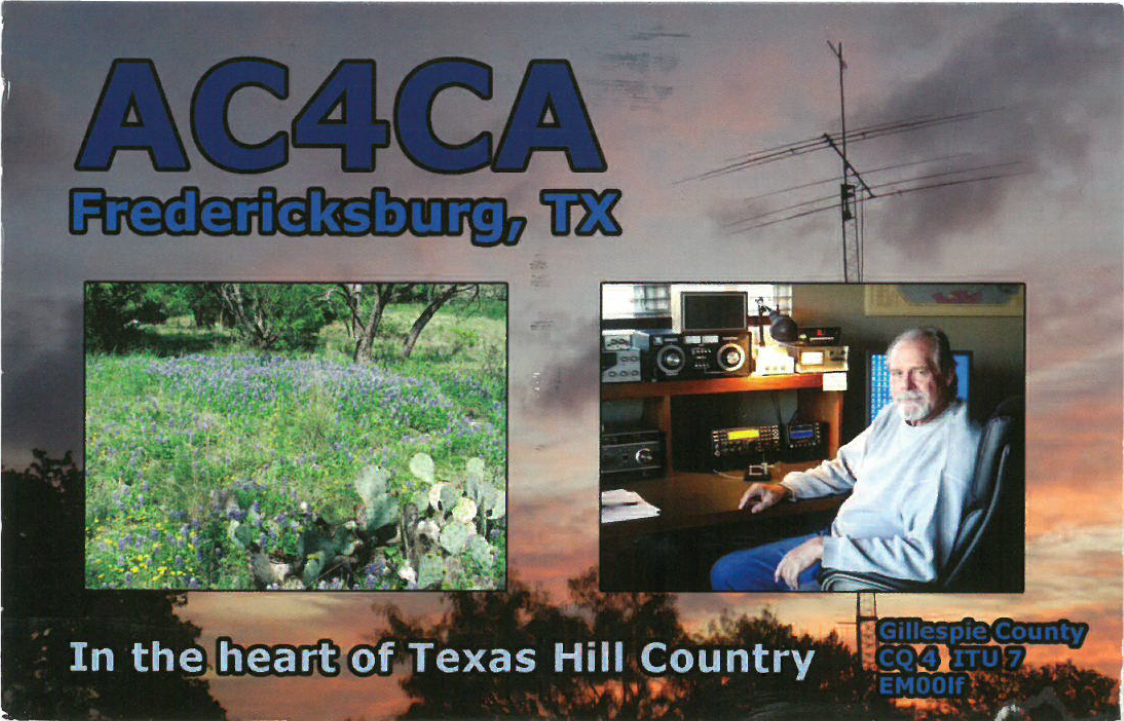 AC4CA
AC4CA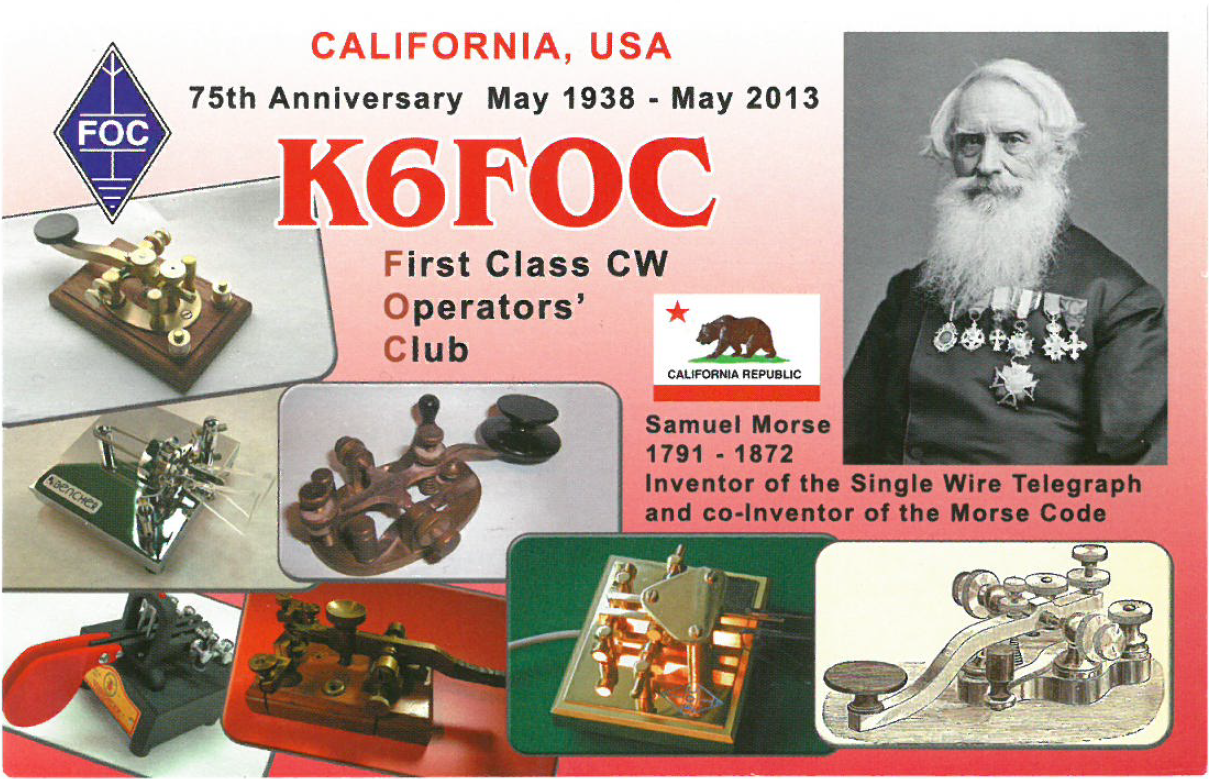 K6FOC
K6FOC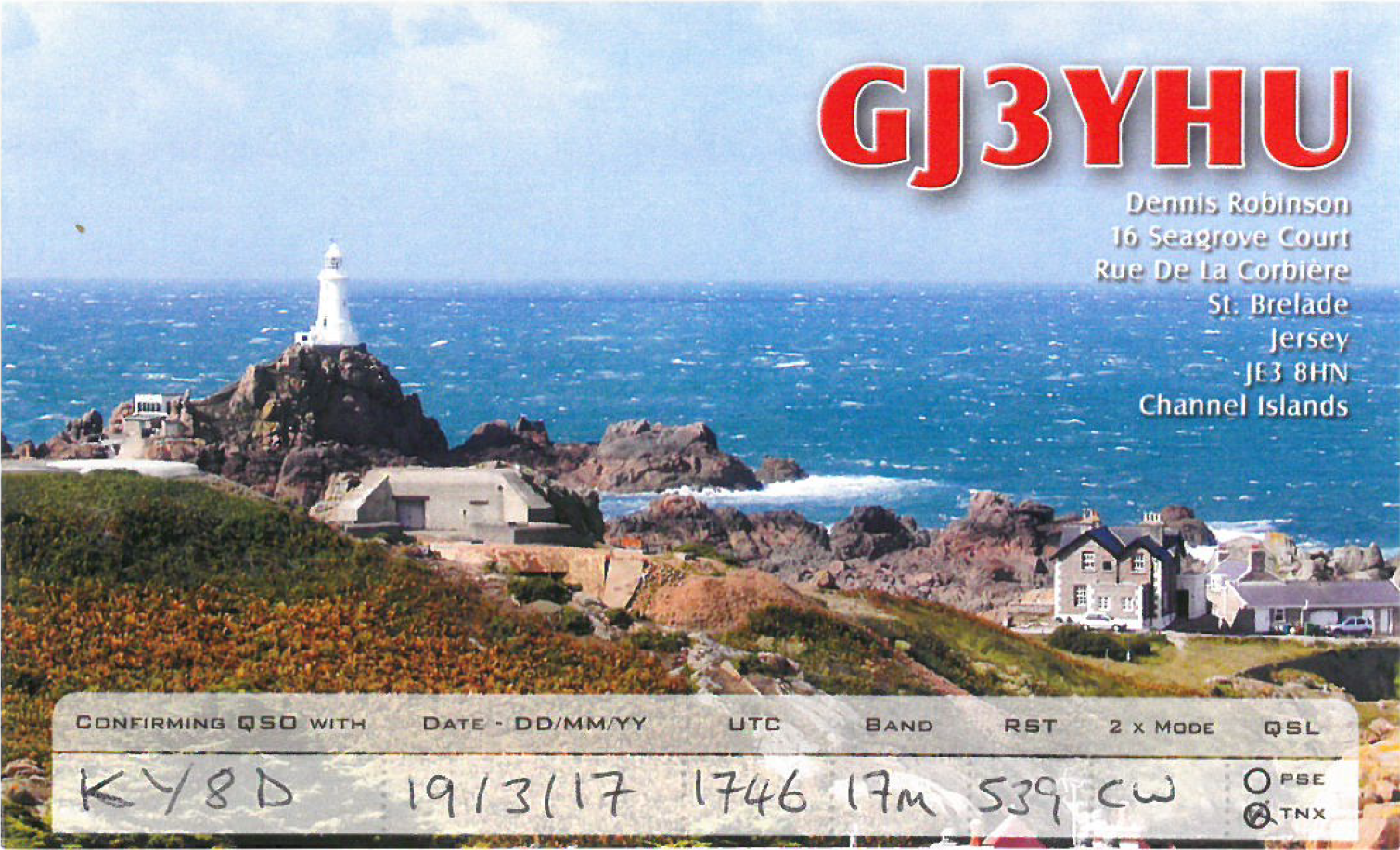 GJ3YHU
GJ3YHU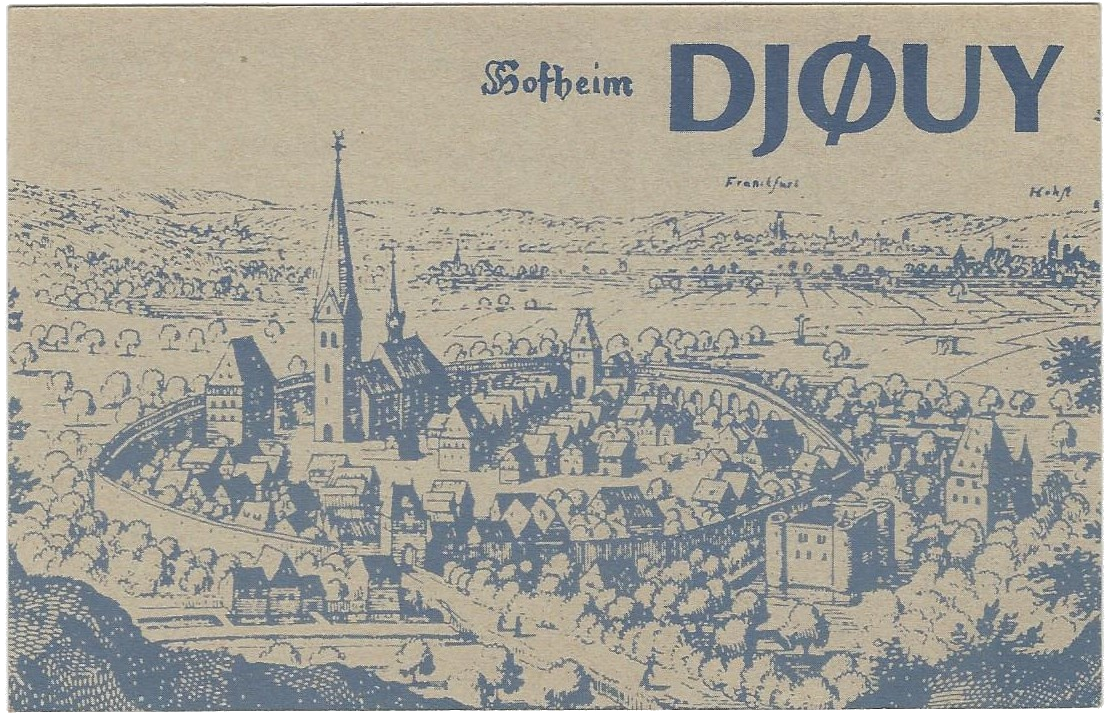 DJ0UY
DJ0UY  WB7RUB
WB7RUB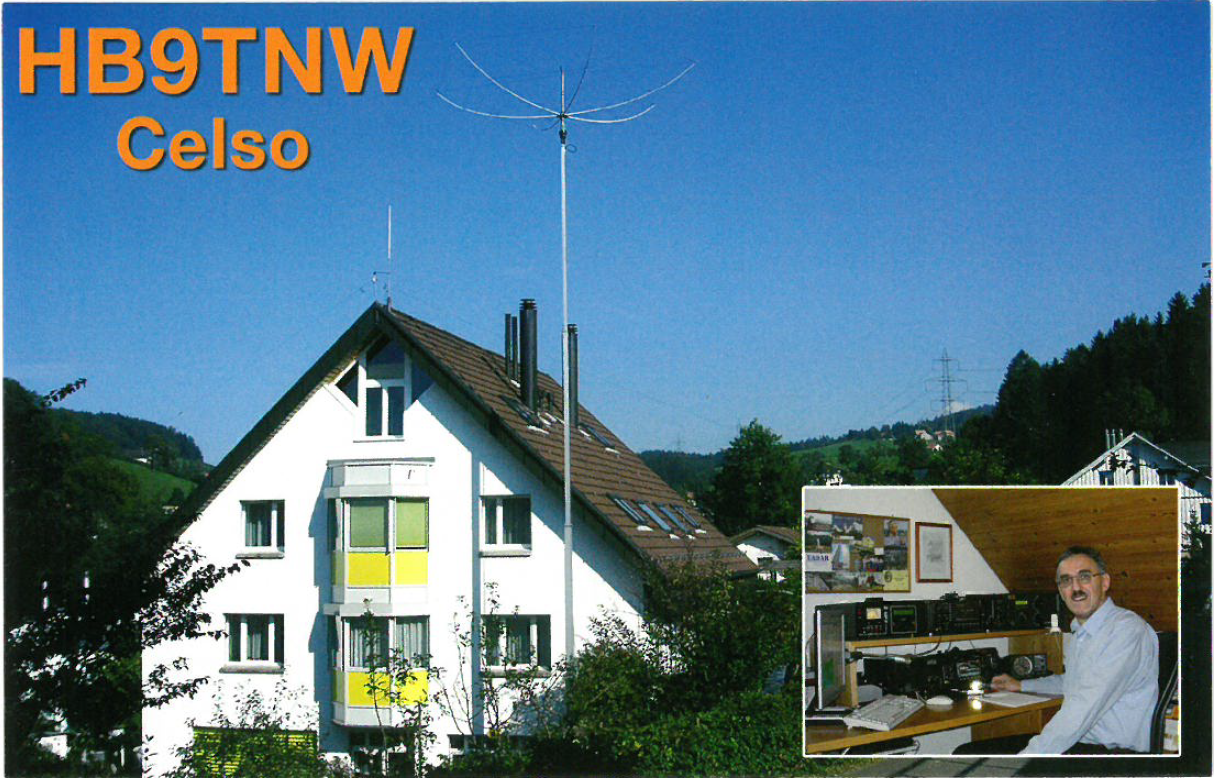 HB9TNW
HB9TNW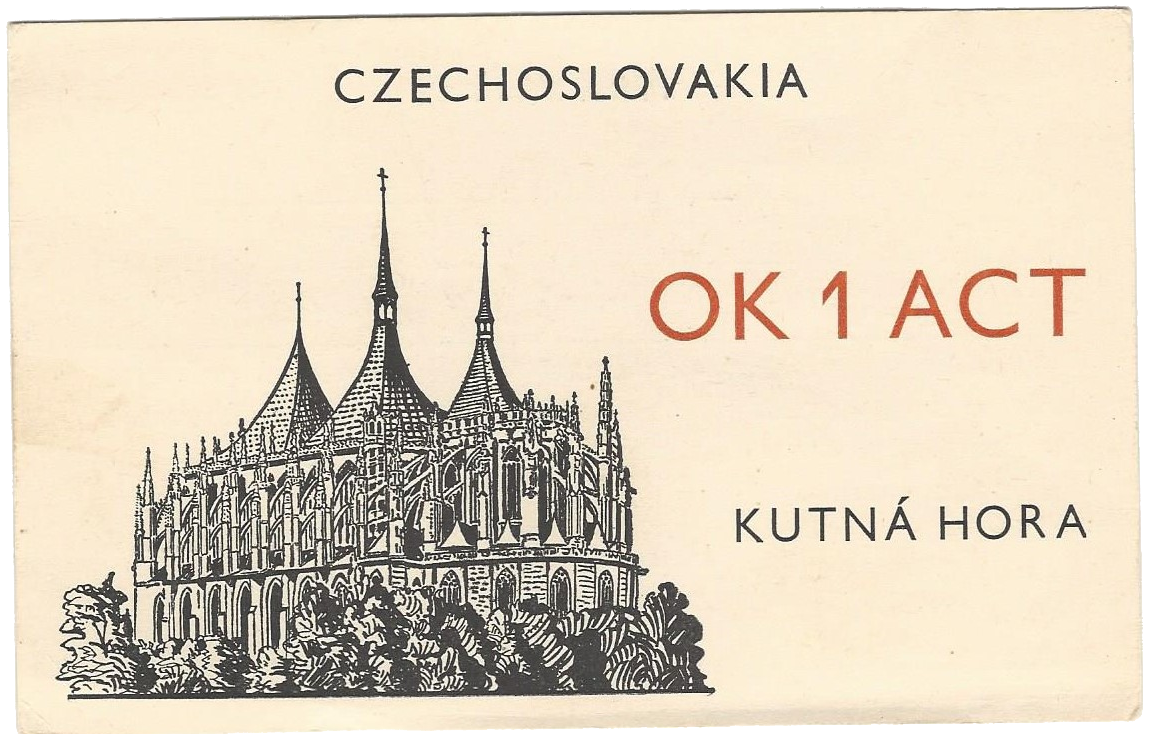 OK1ACT
OK1ACT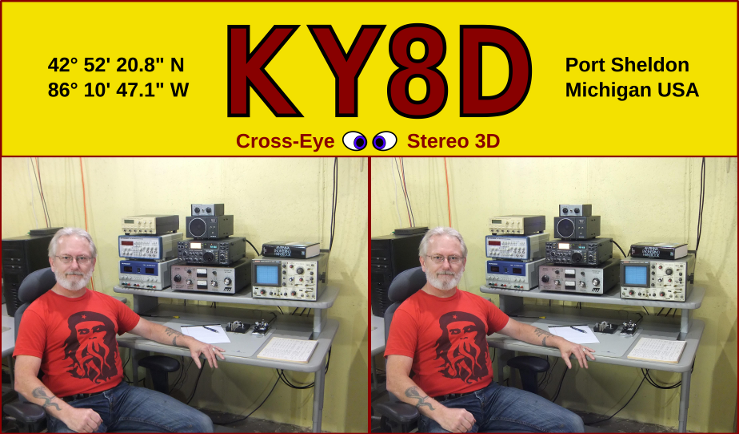 My Prior Metric A6 Cards
My Prior Metric A6 Cards
Here are my current QSL cards, all size Metric A6. Regarding the starling, he is no common Sturnus vulgaris. Attached to him is a most curious tale. A 150-year mystery which, so I hope, you will find amusing to read: The Mysterious Starling.
 Home Station
Home Station On Vacation
On Vacation Up North
Up North
QSL images are thumbnails. Click on any to see more detail.
One of a Kind
In designing your own, originality counts for a lot. Don’t be like guys I knew in the Navy who picked their tattoos by number from off the parlor wall. Hire an artist, if need be. Find one maybe at DeviantArt. Then print on extra-heavy card stock. You’ll save on envelopes and postage by sending as post cards. Flimsy cards often fare poorly in automated mail-sorting machines.
QSL Card Sizes ☜ Postage is the same for all these!
lotw LoTW
I generate an AIDF for upload to LotW each time a new page in my paper log book has been completely filled. So, once every 25 QSOs, however short or long that interval might happen to be.
Pre-Upload Culling
The process is automatic, managed via SQL query: SQL Culled from uploads are US and Canadian QSOs shorter than one third of the on-going, all-time average for whichever of my three call signs apply. Also any DX QSOs shorter than one sixth my average.
Exempted from culling are any stations who have engaged me for a polite duration at least once in the past. Likewise any from whom I've received a real, paper QSL card. Also any QRP stations of 10W or less where RST was below 569.
CW Decoders & Memory
Decoders are cheating. Unless you’re stone deaf, or a learner just starting out, then no valid excuse exists for employing one of these. Mayhap, not even then. I once logged a QSO with a stone-deaf op who read CW by touch, laying fingers on the dome of a speaker from which the cone had been cut away.
Memory keyers have only one legitimate use: automating CQs so as to spare ones wrist for the QSO that shall follow. I deem it irredemably rude that any should answer a CQ of mine with a push-button reply of RST 599 TU SK. Especially as they have almost certainly lied about my actual RST. Take that behavior instead to FT8 where it belongs.
As for CW sent via keyboard, this is often a whole other matter. Many a long-time CW op will find their fist becoming problematic due to advancing age: arthritis, tremor, etc. Hopefullyk, I’m still yet a decade away. Meanwhile, though, I do know of several ops who all read CW at 30-plus wpm wholly by ear, but who must reluctantly resort to a keyboard for sending.
Esperanto
Note my membership in ILERA, the Internacia Ligo de Esperantistaj Radio-Amatoroj. Esperanto is a construted language. I translate classic SciFi and horror into Esperanto. Short stories and entire novels by such grandmasters as Jack Vance, Clifford D. Simak, and Clark Ashton Smith. Here is my page of free ebooks: Fantasto .
Care to try out a second language? In Esperanto, you can gain fluency easy. Once, 40-some years ago, I rented an indoor table for $500 at the Dayton Hamvention, selling some books and distributing over 2,000 flyers. So here now instead, at zero expense, is a link to ILERA's Facebook page: ILERA .
Antenna Construction
Here are the structures presently on and above the grounds around the QTH.
Flying Kites
While portable in South Africa, a few times I hoisted antennas by kite.
Kites A complete how-to. My page on the theory and practice.
Cape Point Hoisting a center-fed sloper (balun, coax and all) on the Cape of Good Hope.
Giant Coat-Hanger
Basically a really long random wire. Doubly random for being bent into a triangle. The wire begins at 2m, then leads up to a height of 12m, where begins the triangle portion, itself 44m per side. From 2015 until 2022, electrically it was an inverted L. In December of 2022, I added wire extending the free end diagonally back down to where the coax shield meets the flat braid leading down to three 10-foot ground rods whose tips dip into the water table. Electrically, the GCH now forms a loop.
As both inverted L and also loop, the GCH has always been fed direcly by coax. So yes, there is high SWR on the coax. Said run of coax, however is short. An MFJ transmatch tunes the GCH for all HF bands plus 160m from inside the shack. Fifteen clamp-on ferrites at the far end keep RF out of the shack.
Even such as it is, the GCH performs well enough. By way of example, in my successful pursuit of the SKCC Marathon QSO award, my qualifying 100th QSO was an hour-plus stint with another op running 5W on a magloop hung from the ceiling of his garage.
Guyed Mast
In my side yard stands a 48-foot mast (16.6m). The lowermost section is 3-inch (76.2mm) OD aluminum pipe, 24 feet (12.8m) tall. The upper four sections are fiberglass tubing. Guy lines run four directions from the 1st, 3rd, and 5th sections. I raised it in a day, all by myself.
Folded Monopole
NEC Model Suspended from the uppermost pully of the guyed mast. An up-slanting feedwire with four parallel down-wires joined grounded at bottom. Eight random length radials (not shown) extend to property line or nearest obsticle. Soil augmented by 100 pounds of graphite sand out to 24 feet.
 Click to zoom out
Click to zoom outInitial QSOs Auto-Tuner a Buyer's Regret
The MFJ-993BRT remote auto-tuner has proven itxelf utterly useless. At issue is its memory function, which can only be reset by going outdoors, removing the cover (held on by loose screws and nuts), then manually pressing a trio of buttons in combination. Buttons which all face the wrong way, so that a dentist's mirror is needed. All while standing upon a ladder. A completely idiotic design.
I had bought it for tuning the Giant Coat Hanger. Temperature changes alone suffice to alter its total length of 146m. And although insulated, still it runs closely past several trees and through a couple of others. Changes of weather and season affect the wire's proximate environment day to day. And because of this, the auto-tuner's memory function cripples functionality. Thus for my purpose the damn thing is useless.
Homebrew Projects
- XML An ever-growing list on a page of its own. Free plans and software with no strings attached.
My Three QTHs
Below is where I operate from at present. Shown is the antenna which I call my Giant Coat Hanger.
 Current QTH
Current QTH
Below on the left is where I lived prior. There my antenna was likewise a random wire, but mounted 2.5 stories up. Pretty good for the middle of downtown. But then I had to get a new roof, so the antenna had to come down. On account of which ... plus a few other reasons ... I ended up going QRT for 26 years.
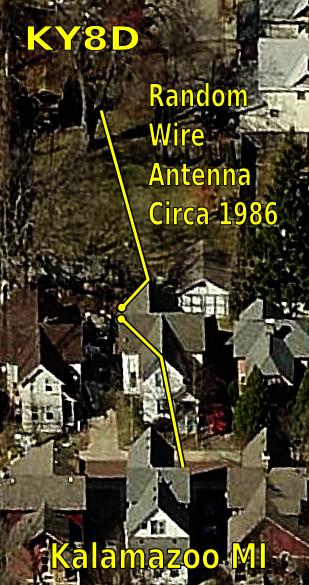 2nd QTH, Kalamazoo MI
2nd QTH, Kalamazoo MI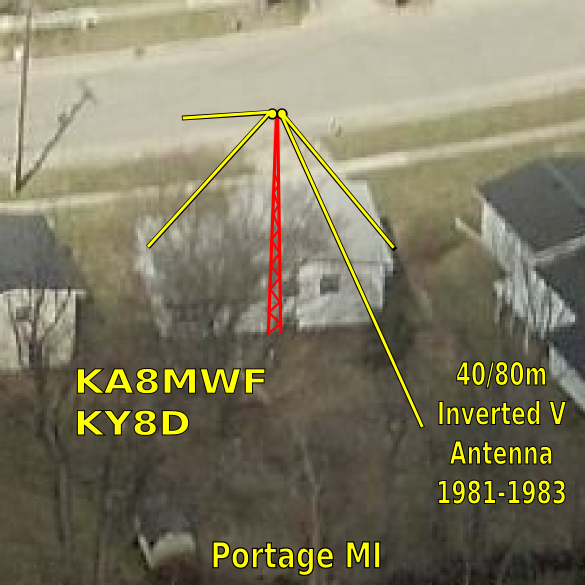 1st QTH, Portage MI
1st QTH, Portage MI
Above on the right is where I grew up. For lack of any satellite photo circa 1983, I have sketched in the now long gone 48-foot Rhon BX tower which my dad had allowed I install after returning home from the navy.
Showing also, in part on the left, where my best friend Tom used to live. Paul, Tom’s dad, as an ex-army radioman from WW2, was an avid CB operator. This was during the mid-1960’s, back in the days when CB stations required an FCC license, and was a hobby was very rare. Operators still ID’d their stations with an official 3x4 call sign and addressed one another by their real names. They even traded QSL cards just like hams. Paul’s 30-foot tower and rotatable, 3-element, vertical Yagi was an item of neighborhood wonder. Ditto for the 9-foot whip on the bumper of his Ford LTD. It would not be unfair to say that way back then, Citizen’s Band was hardly much different from a no-code ham license today, however much it was restricted to 5 Watts and 23 channels, crystal controlled. How very different from now.
After getting out of the Navy in late 1978, I had a CB license myself for a short while. The Rhon BX tower was put up for that, sporting for its first couple years a Wilson Laser 12, 6-element yagi with quad reflector. It didn't take very long however, before all the trash-talking idiots dampend my enthusiasm.
Just about then I got a new job where I worked with Al Nelson, K8OQB, who became my Elmer. I then sold the CB antenna and put up a 40/80m inverted Vee, it's 80m legs terminating in trees now cut down.
Morse Code Practice Files
1,000-plus hours of *.mp3 files. Entire novels in Morse code. Those plus also the system which I employed to create so very many audio files. A pair of programs written in Perl, the source code and even *.exe versions to run on Windows. What I do is load them into my Samsung S7 smartphone where to play them I use the high-rated app Smart Audibook Player. But a regular MP3 player had used to serve me equally well. Thus for my practice, I have available, chapter-by-chapter at increasing speeds, The Princess of Mars, plus many others.
- xml My Morse code promotion page. Morse Code Music
Have you ever wondered if Morse code could be sent on drums, bells, etc?
- xml Simulated 3-way QSO at 16.5wpm.
- xml Poe's poem The Bells on a trio of bells at 11.3wpm.
- xml Ginsberg's poem Howl on bongo drums at 34wpm.
MP3 files generated from free sound files downloaded from here, which I hand-tailored in Audacity, then sequenced to text using a custom Perl script employing the Audio::Wav module.
Freebies
Here are some items which I made for me, which also are fun to give away free, yours truly KY8D.